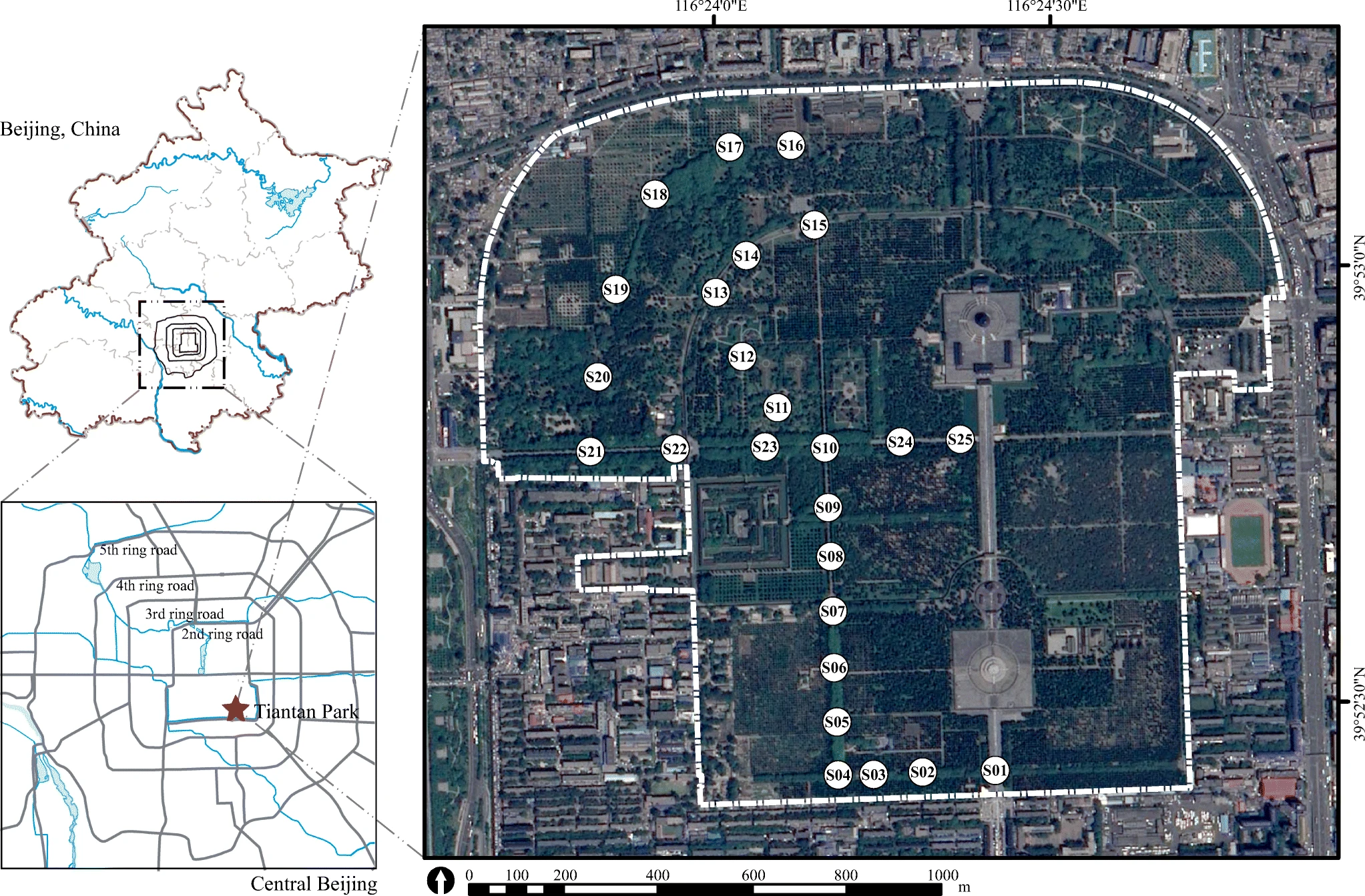Urban green spaces’ atmospheric cooling in Beijing, China
Published in Beijing Forestry University, 2020
Urban heat island has long been documented, as well as the significant cooling effects of urban green spaces (UGS). Yet evidence on UGS’s atmospheric cooling remained insufficient, especially incorporating a cross-scale perspective. By taking urban parks in Beijing as study cases, this research project evaluated the regulating effects of urban green spaces on micro to neighborhood scale cooling. The atmospheric cooling intensity of urban parks and their components were examined, as well as their influencing factors. Results are expected to guide future evidence-based planning and design of urban parks in Beijing, as well as future renewal of these urban parks located at the core area of Beijing, China.

This research project has evaluated UGS’s atmospheric cooling from micro to neighborhood scale, and from inside to outside of urban parks.
Microclimate in urban parks and its influencing factors
At micro scale, the microclimate conditions within urban parks were evaluated, as well as their relationship between the park composition. In particular, two urban parks have been selected as study cases, i.e., Zizhuyuan Park and Tiantan Park (The Temple of Heaven). The former was selected as it’s composed of typical landscape elements, while the latter was selected as it does not contain water bodies, which has a great effect on thermal environment, so that the vegetation’s effect can be investigated.

Location of sampling points within Tiantan Park (The Temple of Heaven)
Refer to one published article derived from this section for more detail.
Parks’ cooling effects on their adjacent areas
Going beyond within urban parks, this section evaluated the cooling benefits of large urban parks to their adjacent neighborhoods during summer and its influencing factors. Measurements conducted along transects reveals that high cooling efficiency exists within ~one park width.

Locations of study sites and sampling points
Refer to one published article derived from this section for more detail.
Green and blue infrastructure and its cooling effect
Besides urban parks, different types of green elements, e.g., street trees, pocket gardens, affiliated green spaces, etc., altogether constitute green infrastructure systems and provide considerable ecosystem services. This section has focused on a special transect in Beijing, i.e., The Second Ring Road, which is a circular route at the very core area of Beijing surrounded by different urban elements.

Study site and locations of sampling points with land-cover classification results in summer
Refer to one published article derived from this section for more detail.
Funding information
This project is funded by Beijing Municipal Science and Technology Commission (D171100007117001, D171100007217003).
